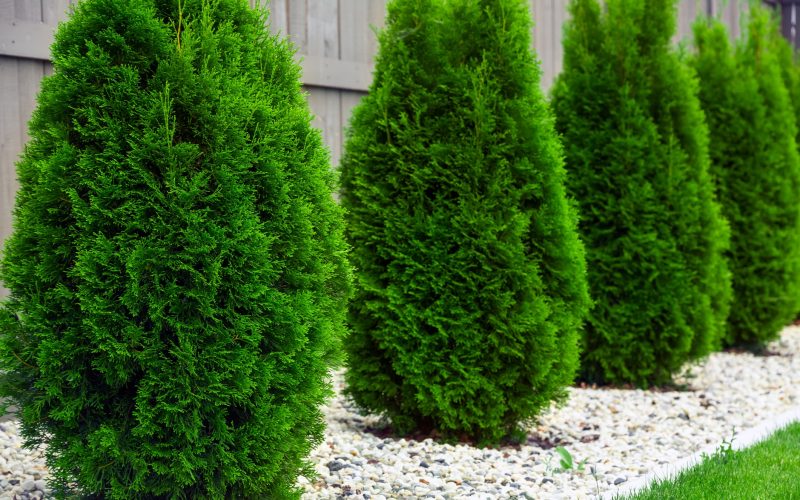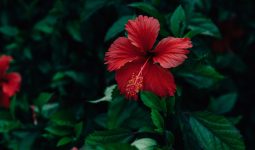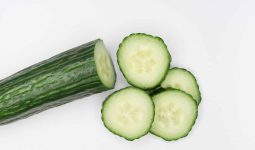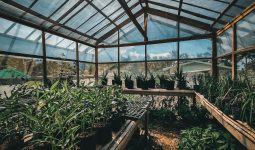Learn about the different types of arborvitae trees, which are evergreen plants that can live for hundreds of years and are renowned for their strong resistance to decay and insects.
Learn more about arborvitae trees if you want to plant a tree in your backyard that will cost you little time or money but will still add the greenery, shade, and natural appearance you want.
Because of their quick growth, they are the ideal cover for offering privacy by serving as a hedge or screen.
Planting several in a row will only take a year to grow densely and cover your home with foliage. They also make the perfect living fence.
Arborvitae trees are evergreen trees classified as being in the Thuja genus. However, when French explorers brought the tree to Paris, you brought the trees from North America to Europe.
Furthermore, these trees don’t just stay green all year and need little upkeep; they continue to look good after their due date.
Large fallen or dead Arborvitae trees can survive for over a century because they are firm and effective in resisting decay and damage from small insects.
Here are the different types of arborvitae trees;
1. American Arborvitae

Of all the Thuja species, American Arborvitae is probably the most widespread. It is a native of Minnesota and the obvious choice for fencing around the property.
This tree can help protect your home from wildfires and give you privacy because it has wind-blocking qualities.
Also, the American Arborvitae is a very tall variety, growing to 25 to 40 feet and a width of 10 to 15 feet. Also, if the hedges’ size bothers you, wide dwarf varieties are widely used in available landscaping.
The American Arborvitae has bright green leaves at the top that progressively dimmer as they get closer to the bottom. When the weather is particularly chilly or harsh, it is typical for the foliage to change into a distinct yellow shade.
2. Emerald Green Arbovitae
In popular culture, the Emerald Green Arborvitae, also known as White Cedar, gets its name from the darker shade of green that develops as it reaches adulthood.
It is best to plant emerald green arborvitae as a screen because it can get up to 30 feet tall and spread to at least 10 feet wide.
If you decide to plant a white cedar screen, you won’t need to prune it into shape because if left unattended, the plant will naturally grow into its distinctive pyramid shape.
Although these trees can grow in any environment, the Emerald Green arborvitae prefers swampy areas with slightly basic soil.
Like the American arborvitae, it can turn yellow during winter. This is one of the different types of arborvitae.
3. Danica Globe Arborvitae
Danica’s Globe Arborvitae is a slow-growing, compact evergreen ideal for confined spaces.
Its dense, rounded form and vibrant green foliage make it a striking addition to any landscape.
This tough little plant is an excellent option for low-maintenance gardens because it can withstand drought and is deer-resistant.
The’ Danica’ Globe Arborvitae is a fantastic option for gardeners who want a compact, easy-to-maintain evergreen.
Furthermore, The Globe Arborvitae achieves its globular shape without outside assistance or pruning, an intriguing characteristic of these trees.
It is beneficial as a wind block or protection for smaller plants because its maximum height is typically no more than 5 feet. If not, you can use it as helpful landscape decoration.
Globe Arborvitaes need the sun’s full force to retain their color; otherwise, they can turn a sickly-looking brown shade. Even though they require little maintenance and can adapt to weather conditions, including droughts, they need the sun’s full force.
4. Little Giant Arbovitae
Small Giant: The dwarf, evergreen arborvitae (Thuja occidentalis ‘Little Giant’) is ideal for gardens and other small areas. It has a small, pyramidal shape and thick emerald foliage.
This hardy little tree is a good option for coastal areas because it can withstand salt spray and is resistant to deer and rabbits.
The ‘Little Giant’ Arborvitae slowly increases to a height and width of about 15 feet. In full sun to partial shade, plant. In zones four through eight, it is hardy.
Anyone looking for a low-maintenance, simple-to-care-for tree should consider this plant. ‘ Little Giant’ Arborvitae is an excellent option for foundation plantings, hedges, and screens.
Additionally, it may be grown in containers. Today, include this multipurpose tree in your landscape. This is one of the different types of arborvitae trees.
5. North Pole Arborvitae
A compact, slowly growing, evergreen North Pole Arborvitae is ideal for confined spaces. Its thick, emerald-green foliage offers privacy and interest all year. This hardy plant is immune to disease, drought, and deer.
It prefers well-drained soil and can be planted in either full sun or partial shade. The low-maintenance “North Pole” Arborvitae will flourish with little attention. Use this adaptable plant to add year-round beauty and privacy to your landscape.
6. Woodward Globe Arborvitae
A compact, rounded variety of arborvitae called Woodward’s Globe Arborvitae is ideal for small gardens and confined spaces.
This slow-growing evergreen is perfect for foundation, hedges, and specimen plantings because it only grows to a height and width of about two feet and four feet, respectively.
The ‘Woodward’ Globe Arborvitae has dense, weather-resistant foliage that is glossy and dark green, offering good year-round interest in the landscape.
Once established, this hardy little plant is also quite drought-tolerant, making it a low-maintenance option for time-pressed gardeners. This is one of the different types of arborvitae.
7. Techny Arborvitae
The Techny Arborvitae variety is the best to plant all over your property if you need to develop a complete shield quickly. They reach their full size in about two to three years, offering as-needed protection, privacy, and shade.
The Techny Arborvitae is relatively slender and has a remarkable full height of 20 feet but only a spread of 6 feet. This particular arborvitae species thrives in regions with severe, long winters.
8. American Arborvitae Yellow
A compact, slow-growing arborvitae called “Yellow Ribbon” from America is ideal for small gardens or use as a hedge. The foliage is an intense yellow color that changes to chartreuse in the summer.
Once established, American Arborvitae ‘Yellow Ribbon’ is drought tolerant and resistant to deer. Full sun to some shade is ideal for this plant.
Although it can tolerate various soils, the American Arborvitae’ Yellow Ribbon’ prefers moist, well-drained soil. It is a low-maintenance plant that requires little care.
9. Baby Giant Arborvitae
Proven Winners introduced a Baby Giant Arborvitae in 2012. It is a small, evergreen tree 12–15 feet wide and 15-20 feet tall at maturity.
Unlike many other evergreens, the Baby Giant Arborvitae has dark green foliage that does not turn bronze in the winter. It expands quickly, adding two to three feet of growth each year.
Furthermore, The Baby Giant Arborvitae is ideal for foundation plantings or small yards. Once it is established, it is also resistant to deer and tolerant of drought.
The Baby Giant Arborvitae is hardy in zones four through eight and should be planted in full sun to partial shade in well-drained soil. It is one of the different types of arborvitae.
10. Berckman’s Gold Arborvitae
A gorgeous, golden-hued evergreen, Berckman’s Gold Arborvitae is ideal for a living privacy fence or as a decorative element in the landscape.
This hardy and versatile plant does well in full sun and partial shade and tolerates various soils. Slow-growing Berckman’s Gold Arborvitae eventually grows to a height of 15 feet. It is also an excellent addition to the home landscape because it is low-maintenance and resistant to deer.
11. Emerald Green Arborvitae
Thuja occidentalis ‘Smaragd, also known as the Emerald Green Arborvitae, is a well-liked evergreen shrub with stunning, deep green foliage. This adaptable plant can be used as a foundation planting, a screen, or a hedge.
Moreover, Emerald Green Arborvitae is low-maintenance and easy to care for. This hardy shrub can withstand wind, salt, and drought, making it a great option if you want a low-maintenance evergreen plant.
12. False Arborvitae
False arborvitae, also called Hiba Arborvitae, is a cypress family ornamental and timber evergreen tree native to Japan. These trees are related to and even resemble the Thuja or arborvitae genera.
False arborvitae, on the other hand, have larger leaves that are identified by embossed white bands on the underside. Typically, the trees reach a height of 115 feet.
Furthermore, these trees produce soft, elastic, yellowish-white wood that is quite durable. Due to its malleability, it has been used for boatbuilding.
The plant has a wide range of dwarf and shrubby varieties for ornamental purposes. This is one of the different types of arborvitae trees.
13. Fire Chief
This Thuja is a dense, upright shrub that works well for foundation plantings, screens, and hedges. The foliage is a deep green color that turns bronze in the winter. Congabe was chosen because it can withstand deer browse.
Moreover, Fire ChiefTM Thuja Shrub is a great option for gardeners looking for a low-maintenance plant that will provide years of beauty with little care.
Once established, this shrub can withstand heat and drought and doesn’t need to be pruned to keep its shape. Being a hardy plant that can thrive in various environments, Fire ChiefTM Thuja Shrub is a fantastic option for novice gardeners or people who lead busy lives.
14. Forever Goldy Arborvitae
Arborvitae Forever Goldy (Thuja plicata ‘4EVER’): is the ideal tree for privacy hedges or screens because it grows slowly and is dense and evergreen.
Its lovely golden-yellow hue brightens any landscape and contrasts beautifully with snow in the winter. This resilient tree requires little upkeep and is resistant to deer.
15. Full Speed A Hedge American Pillar Arborvitae
Fully Automated Hedge® A columnar, evergreen conifer known as American Pillar Arborvitae offers year-round interest and privacy in the landscape. American Pillar is a fast-growing tree that takes ten years to grow from four feet wide to 15-20 feet tall.
Once established, it can withstand wind, salt, and drought. Plant American Pillar in well-drained soil with full sun to light shade. In the early spring, fertilize with a balanced fertilizer.
Furthermore, to shape and prune as necessary. American Pillar is a great option for privacy hedges, specimen plantings, and foundation plantings because it is deer-resistant. This is one of the different types of arborvitae.
16. Hetz Midget Thuja
Hetz Mini Thuja is a slow-growing dwarf evergreen that works well on low hedges or small gardens. Due to its small size and limited height and width, this plant is simple to maintain. It is also very resilient to cold temperatures and, once established, doesn’t need much water.
17. Junior Giant Thuja
The enormous evergreen shrub known as Junior Giant Thuja matures to a height of 30 feet and a width of 15 feet. Two additional giants, Thuja plicata and Thuja occidentalis ‘Emerald Green,’ were crossed to produce this enormous Thuja.
Junior Giant proliferates up to three feet per year, as you can probably infer from its parentage. Its dense, emerald-green foliage has a pyramidal shape and doesn’t turn brown in the winter. Additionally, this plant can tolerate Black Walnut trees and is resistant to deer (Juglans nigra).
18. Oriental Arborvitae
A species of tree belonging to the genus Platycladus is called the Oriental Arborvitae (Platycladus orientalis or Thuja orientalis). Its East Asian origin is referenced by the specific epithet Orientalis. It is also called the biota, the Oriental thuja, and the Chinese arborvitae.
The tree can reach a height of 15-20 m (49-66 ft) and a trunk diameter of up to 60 cm (24 in). The bark is scaly and brown or black. The opposite decussate pairs of scale-like, green to yellowish-green leaves are arranged in pairs.
Four to six seeds are contained in the oval, 12—to 15 mm (0.47 to 0.59 in) wide, and 15-20 mm (0.59 to 0.79 in) long cones, which ripen in the autumn and turn brown or blackish-brown.
Also, the mature cones, carried on short peduncles, fall off and release the seeds. This is one of the different types of arborvitae trees.
19. Rheingold Arborvitae
Rheingold Arborvitae is a gorgeous golden-yellow evergreen, ideal for privacy screens or hedges. This hardy and versatile plant can withstand various conditions, making it an excellent option for inexperienced and seasoned gardeners.
20. Thuja Green Giant
Two North American evergreens, Thuja plicata and Thuja standishii, were crossed to create Thuja Green Giant. This tree grows quickly, adding three feet or more in height yearly.
The Green Giant, an evergreen that matures to a height of 50 to 60 feet with a spread of 20 to 30 feet, is one of the most widely used trees for windbreaks and privacy screens.
Thuja Green Giant is the perfect plant for building a living fence due to its quick growth and upright, dense form.
Also, these evergreen trees proliferate when planted in rows, creating an impenetrable barrier that offers privacy and noise reduction. Arborvitae trees are one of the different types.
21. Thuja Occidentalis Aurea Nana
Evergreen conifer Thuja occidentalis ‘Aurea Nana’ has a dense, compact habit and grows slowly. Golden yellow needles that gradually turn lime green in the summertime are present. Also, this plant thrives in full sun and is ideal for year-round interest addition in small gardens.
Although it prefers well-drained soil, the hardy plant Thuja occidentalis ‘Aurea Nana’ will tolerate most soil types. Once established, it is also tolerant of drought.
Furthermore, this plant is low maintenance and doesn’t need to be pruned. It should be done in late spring or early summer if you decide to prune it.
22. Weeping Eastern Arborvitae
Thuja occidentalis ‘Pendula,’ also known as the weeping Eastern Arborvitae, is a slow-growing, deciduous conifer with long, sagging branches and flexible, green needles. The lovely Weeping Eastern Arborvitae can be used as a specimen plant or hedge component.
Slow-growing Weeping Eastern Arborvitae trees can grow as tall as 20 feet (six meters) and as wide as 12 feet (three meters). It favors well-drained soil and full sun over partial shade. The weeping eastern arborvitae can withstand salt spray and urban pollution.








